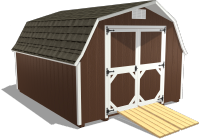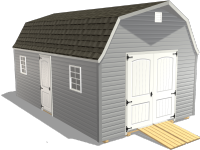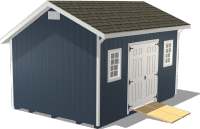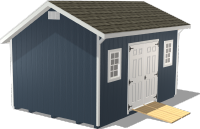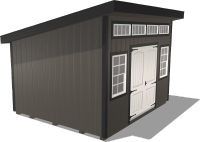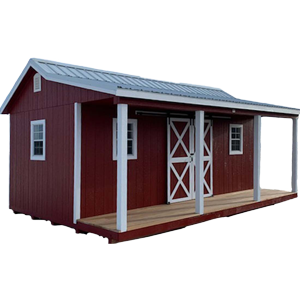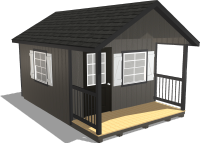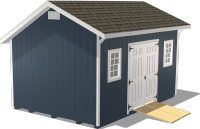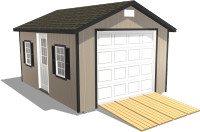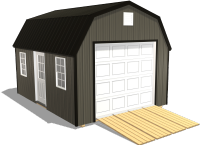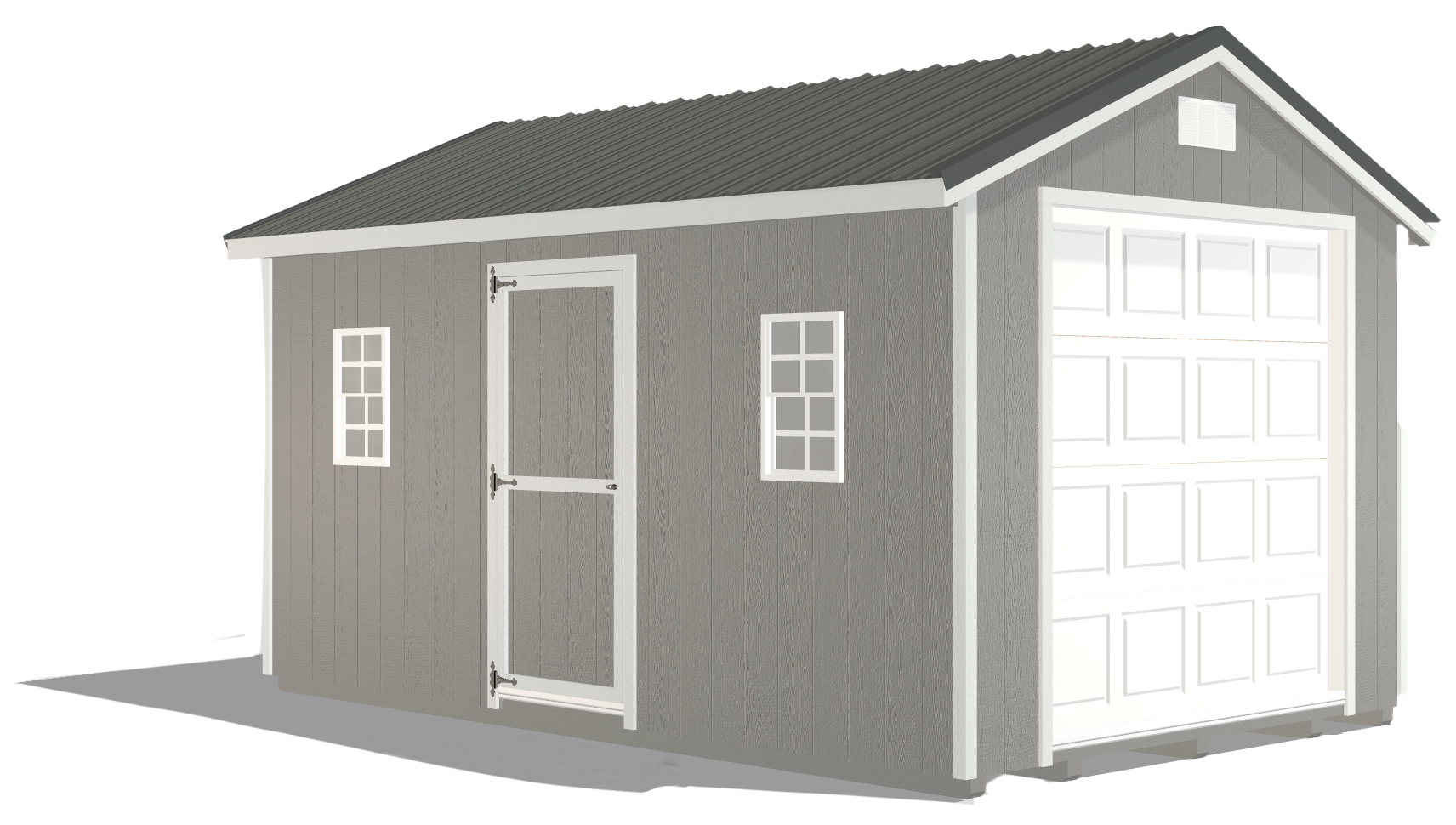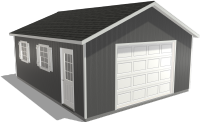All-Season Greenhouse Growing: How to Adapt to Changing Weather
by Dakota Storage Buildings, on May 02, 2025

Owning a greenhouse for backyard gardening means you can enjoy fresh vegetables, herbs, and flowers all year long. But keeping it thriving through every season takes a little planning. As the weather changes, your greenhouse needs some adjustments to stay productive and keep your plants healthy.
As the weather shifts, you must adapt to changing temperatures, humidity levels, and plant growth cycles. If you don’t adjust your greenhouse with the seasons, your plants can struggle with too much heat, freezing temps, or depleted soil — leading to slow growth or even losing your crops altogether.
The key to maintaining a thriving all-season greenhouse is understanding how to transition between seasons effectively. From adjusting temperature controls and modifying ventilation to rotating crops and maintaining soil health, year-round greenhouse owners can create an optimal growing environment no matter the season.
Get Your Greenhouse Ready for the Changing Seasons
Each season presents its own set of challenges. To keep plants thriving, greenhouse owners must prepare their space for the conditions ahead.
Why Seasonal Shifts Matter
One of the most important things to consider is temperature fluctuation. Rapid changes in temperature can stress plants, affecting their growth and overall health. Ensuring proper insulation in the winter and providing adequate ventilation in the summer helps maintain stable conditions.
Humidity levels also shift between seasons, so you must adjust airflow to control moisture. Without proper ventilation, excess humidity in warm months can lead to mold and mildew, while dry winter air can weaken plants and make them more susceptible to disease.
Your All-Season Greenhouse Maintenance Checklist

Before each season, give your greenhouse for backyard gardening a quick check-up to prevent weather damage and keep plants healthy. Inspect for cracks, leaks, or insulation gaps, and adjust shade cloths, heating, and cooling systems as needed. A deep clean of surfaces, tools, and containers helps stop pests and diseases from lingering.
✔️ Check for cracks, leaks, or insulation gaps.
✔️ Adjust shade cloths, heating, and cooling systems.
✔️ Clean and sterilize surfaces, tools, and containers.
✔️ Inspect vents and fans for proper airflow.
✔️ Ensure irrigation systems are working efficiently.
Making the Shift from Cold Winters to Spring Growth
As winter fades and spring brings longer daylight hours and rising temperatures, greenhouse conditions must be gradually adjusted to support new plant growth.
As the days get warmer, many greenhouse gardeners reduce supplemental heating, allowing plants to acclimate naturally. However, early spring can still bring unexpected cold snaps, so it’s best to monitor overnight temperatures and have row covers or heating elements available if needed.
Spring is the ideal time for seed starting and planting cool-season crops such as lettuce, spinach, radishes, and peas. Removing any remaining winter crops and refreshing soil with compost or organic fertilizers helps restore nutrients and prepare beds for planting.
Because pests become more active in the spring, inspecting plants regularly and implementing organic pest control methods can prevent infestations before they take hold.
Getting Your Greenhouse Ready for the Heat of Summer
With summer comes intense sunlight, higher temperatures, and increased water demands. Without proper preparation, greenhouse temperatures can rise to extremes, causing heat stress in plants.

To keep conditions stable, you may want to install shade cloths to filter direct sunlight, reducing the risk of overheating. Increasing airflow through vents, exhaust fans, or automatic louvers helps regulate temperature and humidity levels, preventing excess moisture buildup that can lead to plant diseases.
Watering schedules also need to be adjusted. During hot months, plants need more water to prevent drought stress. However, overwatering can be just as harmful, leading to root rot or fungal growth. Misting systems and mulch can help retain moisture without waterlogging the soil.
Summer is an excellent time for growing heat-loving crops like tomatoes, peppers, and cucumbers. Herbs like basil, oregano, and rosemary also thrive in warm conditions. By selecting the right plants and managing water and ventilation, you can maximize your summer harvests.
Preparing Your Greenhouse for Fall’s Cooler, Slower Growth
As temperatures cool, the focus shifts from protecting plants from extreme heat to maintaining warmth in the greenhouse. Many gardeners begin gradually reducing ventilation to help retain heat during cooler nights. Adding row covers or thermal insulation can provide additional protection against unexpected cold spells.
Fall is the perfect time to switch to cool-season crops. As summer plants reach the end of their growing cycle, replacing them with kale, carrots, beets, and broccoli ensures you continue to harvest fresh produce. Prepare the soil by adding compost or slow-release fertilizers to help support these new crops as they establish roots before winter arrives.
If you’re looking to extend the growing season, use cold frames or hoop tunnels inside the greenhouse for backyard gardening to provide additional warmth. Adjusting fertilization and watering schedules to match slower growth cycles also ensures plants receive the nutrients they need without excessive water or nutrients going to waste.
Reinforcing Your Greenhouse for Cold Winter Weather Ahead
Preparing an all-season greenhouse for winter is crucial for protecting plants from frost and extreme cold. Sealing gaps, reinforcing insulation, and checking for drafts prevent heat loss and maintain a stable environment. Many greenhouse owners use supplemental lighting to compensate for shorter daylight hours, ensuring plants receive enough light to continue growing.

To protect plants from frost damage, you should use heat mats, water barrels, or even small space heaters to maintain a consistent temperature. Choosing cold-hardy plants such as spinach, Swiss chard, and winter lettuce lets your greenhouse for backyard gardening remain productive even in freezing conditions.
Winter is also an important time for soil and structural maintenance. Rotating soil amendments helps restore nutrients depleted during previous growing seasons. Inspecting greenhouse integrity and reinforcing structures ensures they remain strong enough to withstand snow or heavy winds.
Keep Your All-Season Greenhouse Productive Year-Round
A thriving year-round greenhouse for backyard gardening requires thoughtful seasonal adjustments to maintain stable growing conditions throughout the year. By understanding how to transition between winter, spring, summer, and fall, you can protect your plants from temperature extremes, improve yields, and reduce greenhouse maintenance challenges.
Simple steps like adjusting ventilation, rotating crops, and reinforcing insulation can make a significant difference in the success of all-season greenhouse gardening.
Are you looking to expand your greenhouse knowledge? Download our “Beginner’s Guide to Backyard Greenhouses” and discover more tips for maintaining a productive and healthy growing space in every season.





